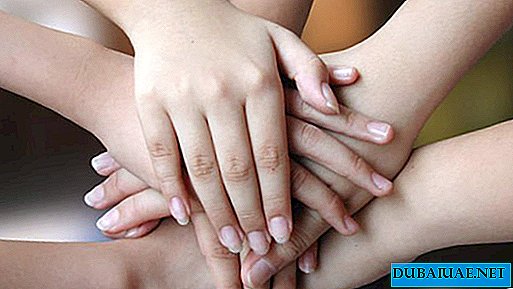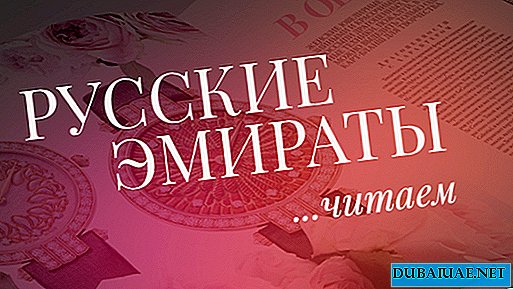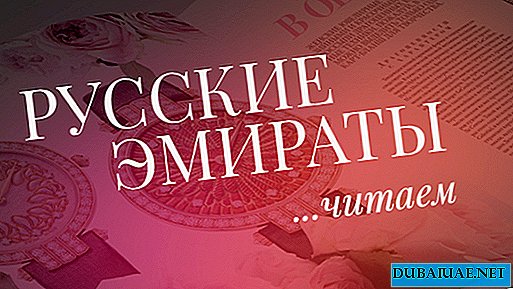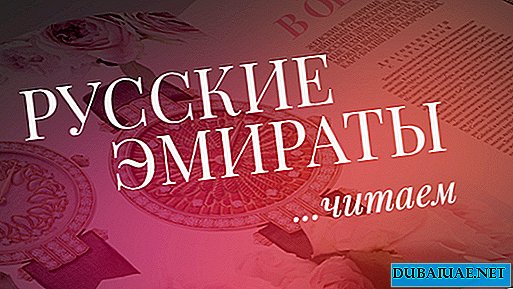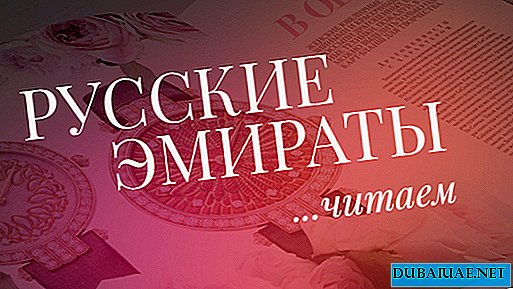"The only decoration worthy of a man is the blade" Prosper Merimee
This consideration of the romantic writer, a famous French writer, fully applies to the Arabian Arab.
Time ruthlessly destroys the material evidence of the life of great historical figures and even entire generations, but it is powerless against edged weapons, which seem to protect itself from oblivion.
The most famous historical character for a billion Muslims around the world, residents of the East in general, is the Islamic prophet Muhammad, son of Abdullah. Museum workers in many countries around the world, demonstrating things supposedly belonging to the great Meccan, claim that his sandals, a raincoat, beard hairs, a mirror, a staff, a glass for antimony were preserved, but historians do not find evidence confirming that these objects indeed belonged to the messenger of Allah.
 Another thing is the swords of the prophet. Almost all of them, having survived the time, are stored in the Topkapi palace complex in Istanbul, in its armory, where, along with the ceremonial robes of the Sultans and their thrones, bows, arrows, helmets, firearms and knives are stored. Among them are the blades of Muhammad - the eternal stones of memory that are not washed away by the waves of historical transience.
Another thing is the swords of the prophet. Almost all of them, having survived the time, are stored in the Topkapi palace complex in Istanbul, in its armory, where, along with the ceremonial robes of the Sultans and their thrones, bows, arrows, helmets, firearms and knives are stored. Among them are the blades of Muhammad - the eternal stones of memory that are not washed away by the waves of historical transience.
The peoples of the East remember their history well and highly value the memory of historical and expensive edged weapons. At the IDEX 2009 arms exhibition, two stands were dedicated not to formidable weapons, but to weapons beauty. Their exhibits did not smell of gunpowder. They attracted with diamonds, gold, silver, expensive woods, precious stones and bone, not only ivory, but even bird. One of the stands was Russian, the other belonged to Kuwait.
These expositions did not make proposals for military minds making turns in history, but for romantic souls who kept it. The first showed a collection of blade weapons, the second - made in Germany and the Czech Republic by order of one of the sheikhs of the Kuwaiti ruling family - unique gift pistols.
The Russian Status Gift Fund showed in-kind, as well as in prospectuses and colorful catalogs, collection daggers, stacks and swords. The director of the fund, Andrei Shansherov, told the magazine’s correspondent that they "were created in Zlatoust by Russian gunsmiths and artists based on samples of historical weapons that were in service in Russia during the tsarist and Soviet periods or used as honorable gifts and awards." Dragoon checkers, general's daggers, unique stacks, representing “hidden weapons”, dressed in expensive cases of ebony and mahogany, glittered with precious metals and stones in the window.
The "Status" showcase was very popular among princes and sheikhs, other high-ranking visitors, gift shop owners, collectors and just lovers of the beautiful. Visitors noted the art of Russian masters in gilding, forging, engraving, etching and metal carving on weapons products, executed at the peak of perfection.
The Kuwait booth displayed unique pistols trimmed with gold, silver, rare species of wood and even falconry. The cost of individual firearm exhibits reached 50 thousand dollars.
"Our main customers are representatives of the ruling Arabian families. In the countries of the East, they have a special attitude to weapons. It is the shield and face of a man and Arab civilization," the representative of a Kuwait gift company advertised his exhibits.
 The gentlemen of Arabia, dressed in dazzling whiteness, starched, fragrant, but monotonous outfits, have for centuries adorned themselves with weapons. Emirates departed from the tradition of wearing daggers on painted belts only in the last quarter of the 20th century. In old photographs, you can still see the founder of the Emirate state, the late first president of the UAE, Sheikh Zayed bin Sultan Al Nahyan with a dagger on his belt. In recent decades, Sheikh Zayed did not wear daggers. They were abandoned by ordinary emirates.
The gentlemen of Arabia, dressed in dazzling whiteness, starched, fragrant, but monotonous outfits, have for centuries adorned themselves with weapons. Emirates departed from the tradition of wearing daggers on painted belts only in the last quarter of the 20th century. In old photographs, you can still see the founder of the Emirate state, the late first president of the UAE, Sheikh Zayed bin Sultan Al Nahyan with a dagger on his belt. In recent decades, Sheikh Zayed did not wear daggers. They were abandoned by ordinary emirates.
In Yemen, where the majority of the tribes inhabiting the UAE originate, a man who does not gird with a crooked dagger "jambia", considers himself not dressed. The dagger is the main element of his outfit on a festive walk and an ordinary walk. A man is evaluated by this element of the wardrobe. A 10-year-old boy with a dagger feels equal among adults. In a country where there are even tanks and missiles in personal possession, any man armed to the teeth attracts the attention of those he meets only with the belt on which this weapon symbol hangs. In Yemeni families there is no thing more expensive than a dagger. Everything except him is depreciating. The older the private melee weapons of the head of the family, the more dignity she has.
Once the "jambia" was worn on its side, as evidenced by its adjective name, derived from the Arabic word "janb" (side). It was so long ago that no one will say when the dagger moved to a catchy place in the center of the belt and became an adornment of the male abdomen.
The most original crooked and treacherous Arabian knife in the world is several thousand years old. In the darkness of centuries, the most famous ruler of "Happy Arabia" - the Queen of Sheba Balkys, gave him praise for ensuring peace and security.
The entire male half of the country does not just love a dagger. She adores the jambia as a whole and praises each of its parts: hilt (handle), blade, scabbard, belt. The handle may have a rounded head or diverge ends on the sides, like the neck of a Russian two-headed eagle. It can have different forms, but it must necessarily have a thin neck and broad shoulders called “guards”, from which a curved blade comes out. Ephesus is the main element of the jambia by which it is judged. The remaining parts are only a complement. Handles are made from cow horn and giraffe bones, and the most valuable are made from rhino horn. Under the influence of time and hand touch, the products from the dark horn of the African giant acquire velvet smoothness and brighten to the transparency of the glass. There are few such unique daggers called "syfani". Their age is estimated at 500 and even 1000 years.
The blade is forged in several historical centers of Yemen, including the capital Sana'a, from a single strip of steel, called "Indian", and honed to the sharpness of the razor. The arabic crooked knife is insidious. His treachery lurks in the air channels located in the blade, through which destructive air bursts into the body of the wounded victim.
The scabbard from trees of local species is covered only with thin white lamb skin, which is then covered with a braided leather cord, most often painted green. The lower end of the sheath gently bends upwards by about a third of the length of the blade. It is said that this piece of dagger robes was used to store silver coins. A belt embroidered with gold, pressing the jambia to the stomach, is only appreciated if it is made by hand. It is embroidered by women and prisoners in local prisons. Belts for precious "syfani" are embroidered with gold.
Wealthy Yemenis are hunting for old jambia. In the spirit of the Arabian proverb "Holy beauty, do not think about kalym", they are ready to pay any money for a unique knife. The cost of a jambia comes to a million dollars. But those wishing to sell the ancient pride of the family are hard to find. The symbol has no price. He is not expensive by money.
In the Sultanate of Oman, whose inhabitants wear the most colorful hats on the Arabian Peninsula, the production of these short blades in a sheath, trimmed with silver, pearls, bright stones, including precious stones, and even crystal, is widely developed. The Omani dagger - "khanjar", from which, by the way, our Russian word dagger comes from, is very popular in the region. It looks like a Yemeni "jambia", also made by hand and costs an average of 1000-1500 dollars. The prices of individual copies, depending on their finish, exceed $ 5,000.
Unlike the Yemenis, who do not go outside without daggers, and the Emirates, who have turned a blind eye to the old tradition, in the Sultanate of Oman, only the villagers always carry “khanjars”. Citizens are retreating from this custom. At the same time, the capital’s officials at the ceremonies of the Sultan’s court should appear with weapons decorations on their stomachs. Large statesmen are given expensive representative daggers, as before in Russia senior naval officers were given daggers.
A few years ago a rare find was made in Yemen. It is perfect in any public place and confirms the general rule: if you want to find something, do not rush to the sides, but be attentive to what lies under your feet, right in front of you. At a regular bazaar in the city of Taiz, a Yemeni scientist discovered a dagger put up for sale at a bargain price, the founder of the Abbasid dynasty, Caliph Abbas ibn Ibrahim ibn Muhammad ibn Ali ibn Abdullah ibn Abbas ibn Abdel Muttalib.
More than a thousand years ago, the copper dagger of the Islamic empire that ruled the prophet Muhammad’s relative, his grandfather Abdel Muttalibu, is richly painted. The inscription "Oh, the Conqueror" is placed on his handle. The scabbard is decorated with elaborate arabesques and images of sea animals framed by the words "O Mighty" and "Hand of Allah is one with the right hand of Caliph Abbas." The dagger of the first Abbasid caliph enriched the treasury of military relics of the Prophet Muhammad and the Muslim conquerors who succeeded him, in which daggers are rare.
Eastern rulers loved daggers, but were more interested in swords. In Arabic onomastics, the male name "Khanjar" is quite rare, but the name "Safe" (Sword) is very common. Often it is part of compound names, such as Safe-ul-Muluk (Sword of Kings), Safe-ud-Daul (State Sword), Safe-ul-Islam (Sword of Islam), Safe-ud-Din (Sword of Faith), Safe u-Lla (Sword of God), Safe-unNasr (Sword of Victory).
How many words are there in Russian for swords? Saber, saber, broadsword, shamsher, epee ... Then I get into difficulty. A page is not enough to list the Arabic names of these edged weapons. There are about three hundred of them. Each word refers to a specific sword, noting its special advantages: sharpness, length, thickness, luster, quality of metal, jewelry used, painting, place of production. Among them are “BARIKA” (sparkling), “SafIHA (wide),“ SAZIJ ”(naive) - on the blade of which there are no inscriptions,“ SamsAm ”(stiff),“ LyakhZAM ”(sharp),“ Crayfish ”(thin),“ Faisal "(separating) - ruler, judge; one who separates truth from lies.
 In the Ottoman Empire, the sword seemed to replace the royal crown. The Turkish sultans, who wore colorful turbanes, who came to power, were not seduced by golden crowns. Instead of coronation, they held "sword girdle" ceremonies. The East does not know the measure in expensive excesses, and some caliphs gird with two swords. Which, in general, is not surprising, taking into account the temptation that arose in the souls of rulers among the variety of these military weapons in the countries of the medieval east.
In the Ottoman Empire, the sword seemed to replace the royal crown. The Turkish sultans, who wore colorful turbanes, who came to power, were not seduced by golden crowns. Instead of coronation, they held "sword girdle" ceremonies. The East does not know the measure in expensive excesses, and some caliphs gird with two swords. Which, in general, is not surprising, taking into account the temptation that arose in the souls of rulers among the variety of these military weapons in the countries of the medieval east.
The Islamic prophet Muhammad had 10 or 9 swords. The latter number confirms most sources. The swords have been preserved and are now in museums, and mainly, as noted earlier, in the Topkapi palace complex in Istanbul.
All the swords of the prophet had their own names. The first of these, al-Maasur, was inherited by Muhammad from the father of Abdullah ibn Abdel Muttalib in adolescence, even before the announcement of the prophecy. With him, a 15-year-old boy, he participated in one of the last wars of the pre-Islamic "era of ignorance", in which his tribe of Koreans won. With him, having assumed the prophetic mission, he went to the oasis of Yasrib, which later became Medina, at the end with the first Muslims from Mecca, who was hiding in the conspiracy. Al-Maasur with a golden hilt decorated with emeralds and turquoise, on the blade of which the name of the father of the prophet is written, was transferred to Muhammad later by his cousin and son-in-law Imam Ali.
The most famous sword of the great Meccan is Zu-l-Ficar, also called Zu-l-Fakar. This name can be translated as "jagged", "having dents, notches," either received in battles, or made in the production process.
Historians say that the “Zul-Ficar”, captured by the companions of the prophet in one of the battles against the Arabian pagans, had two blades and was considered a very cruel weapon. They classify the Zu-l-Fikar trimmed with silver as the prophet’s beloved swords and claim that Muhammad did not part with him and wore it not in the generally accepted manner on the side of the belt, but, according to the Arabic tradition, in the neck band. In one of the battles of the first Muslims with the pagans, this formidable sword was armed with the son-in-law of the prophet, who, after the battle before the co-religionists, according to the testimonies of his contemporaries, had "arms stained with blood on the shoulders". The name of this blade became the masculine name worn at the end of the last century by the President and Prime Minister of Pakistan Zulfikar Ali Bhutto. The name of the glorious sword did not save the Pakistani leader from death. He was secretly hanged by a Pakistani military junta in 1979.
Another favorite sword of the Messenger of Allah is called "Al-Kadyb" (stick, bar, wand), which was almost a meter long, leather scabbard, which was lightweight and never used in wars. The Al-BattAr sword (cutting, sharp), called the “sword of the prophets,” “the sword of justice” and “retribution,” was used in the girdle ceremonies of the Turkish sultans. On his double-edged blade 101 cm long, a drawing is applied, which is interpreted as the reprisal of the prophet Daud (David) with his opponent, the names of the prophets preceding Muhammad are inscribed. Some commentators question the possibility of Al-Battar belonging to the prophet because of the depictions of human figures on it, which contradicts Sharia prohibitions. Nevertheless, it is known that the Turkish rulers laid bare this weapon of the Messenger of Allah before their conquests and, holding a sword in front of them, turned to the Almighty with prayers for the granting of victory.
According to historians, this sword, along with two others - “Kagli”, named after one of the villages outside the Arabian region, and the sword “Al-Hatf” (perdition), allegedly, were captured from a Jewish tribe living in Medina, expelled from the city for the betrayal of the first Muslim community. In the legend of the sword, it is claimed that it was forged by the hands of the prophet Daoud himself on the model of an even older Al-Battar, but of a greater length, reaching 112 cm.
Other swords of the prophet - "Ar-Rasub", which reached a length of 140 cm, "AlMihdum" and "Al-Adb" (sharp). The latter is the only one of the swords of the Messenger of Allah, stored in the Arab region. It is located in a mosque bearing the name of the grandson of the messenger of Allah, Hussein ibn Ali in Cairo.



